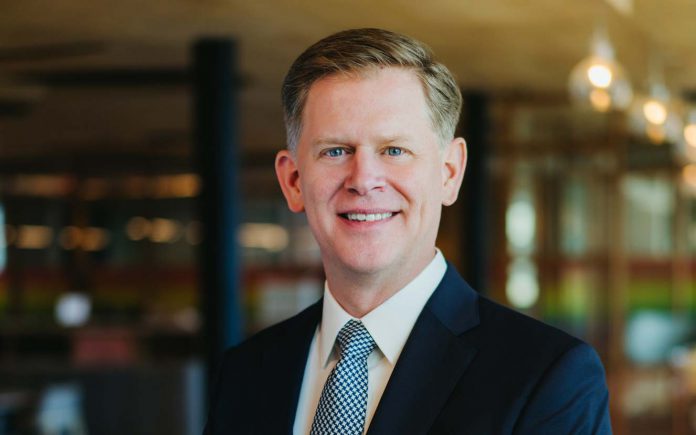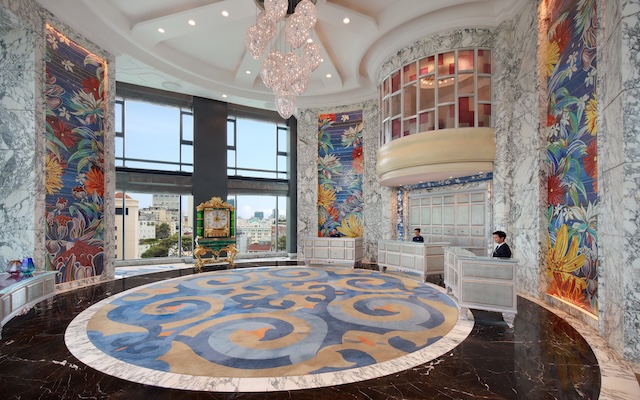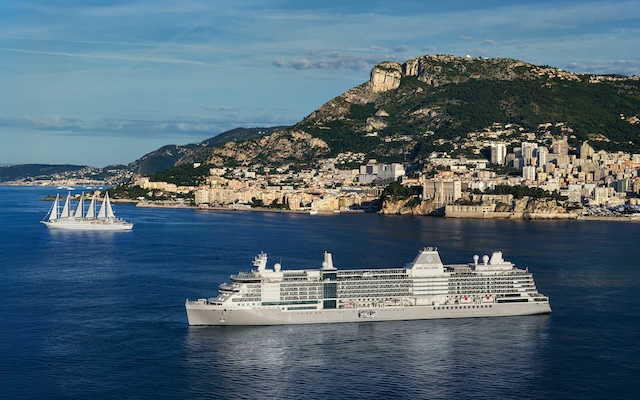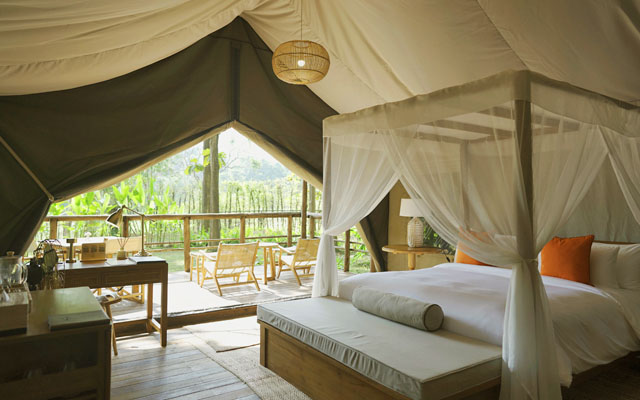Marriott International came off a record year of signings in 2023 and straight into another superb year in 2024 that saw it score its largest ever number of deals and rooms. Shawn Hill, chief development officer, APEC, fleshes out the company’s accomplishment and hints at another confident year ahead
 Congrats to another record-breaking year of signings. You broke record in 2023 with 80 new deals, and again in 2024 with 109 new deals. Is Marriott stepping into 2025 with the same confidence? What factors are stoking such confidence?
Congrats to another record-breaking year of signings. You broke record in 2023 with 80 new deals, and again in 2024 with 109 new deals. Is Marriott stepping into 2025 with the same confidence? What factors are stoking such confidence?
Yes, we are. We see the same momentum continuing into 2025. It is the enthusiasm of our partners that is feeding our confidence. They are going full steam ahead and are very excited about the future. They are working on long-term development projects, beyond conversion projects for this year or next year. Our pipeline of signed MoUs, which allows us to measure how many deals we are going to have for this year and so forth, is as full as it has ever been.
Are rising trade tensions and intensifying geopolitical issues not having an impact on the investment mood of your owners and developers?
Well, we’re not seeing these as issues. Sure, people are talking about the situation, but I think it’s more out of curiosity about what’s going to happen. Our partner projects are several years out, so they are looking far into the future. The view they may have is that tariffs will come and go over time, but the hospitality and tourism industry is very solid.
Many of our partners have a China-plus-one diversification strategy, which is pushing a lot of investment into Asia, especially South-east Asia. We have seen areas popping up and starting to develop. And if an area softens, activity is moved to another region. That’s the advantage of the APEC (Asia Pacific excluding China) region having so many countries. Many countries are firing at one given point.
Are loyal partners behind most of the new signings in 2024?
We signed 109 deals across 11 markets and 21 different brands, which gave us 21,000 additional rooms. That represented two major milestones for us — it was the first time we have ever crossed 100 deals and 20,000 rooms in a single year.
As we reflected on this achievement, two words popped up for us: trust and confidence. This specifically refers to our owners and partners. Thirty-five per cent of our signings in 2024 were with existing owners and partners. They choose our brands, they believe in us, and choose us to grow with them.
At the same time, 40 per cent of 2024 deals were conversions – owners taking their old flags and brands and converting them into Marriott brands and hotels.
We also saw 7,000 rooms being signed that were part of portfolios or large multi-unit transactions.
With conversion projects being quick to market, how many of those deals have opened at this point?
They typically open either within the year or within 18 months. Of the more than 7,000 conversion rooms we signed, about 5,000 have opened.
What strengths would you say Marriott International has to attract repeated deals from the same partners and owners?
Our number one strength is our Marriott Bonvoy programme. It is the reason why many of our existing owners are doing more deals with us. They see the power of the loyalty programme, which now has more than 219 million members worldwide.
Our owners and partners own multiple brands, typically not just Marriott International brands, and over time they say to us, “Wow, your hotel just performs so well”.
The Marriott Bonvoy occupancy is very high, which means we drive really strong returns for the hotel. And the cost of acquisition for those customers is very low because of the strong membership loyalty. More than 70 per cent of bookings originated from the Marriott Bonvoy app in 2024.
Number two is our distribution. We have one of the best distributions within the APEC region.
Your 2023 signings involved 19 brands, with Fairfield by Marriott leading the way among owners, followed by Marriott, Courtyard by Marriott, and JW Marriott; The Luxury Collection and Westin tie in fifth place. Can you flesh out the brands that were most in demand for 2024 signings?
Make a guess what our number one brand was. It is our newest brand.
Four Points Flex by Sheraton?
Yes! Since our initial portfolio signing with KKR (a US private equity firm that gave Marriott International 14 conversion projects across Japan) in May, we have gone on to sign a few extras, also for Japan.
Four Points Flex by Sheraton was by far our number one brand in terms of both hotel units as well as rooms. Number two was the Courtyard by Marriott brand, followed by Marriott, JW Marriott, and Sheraton in fifth place.
Besides the fact that KKR’s 14 conversion projects gave the brand such a huge bump up, why else does Four Points Flex by Sheraton have such good growth potential?
Four Points Flex by Sheraton caters to travellers that are looking for just a very simple, basic product that is done right.
In Japan, specifically, hotels of this (midscale) category have rooms sized between 12m2 and 17m2. The rooms would typically offer everything a guest needs and nothing that the guest will not need, plus at the right price point.
Seasoned travellers – many being Marriott Bonvoy members – are choosing to stay with Four Points Flex by Sheraton properties. We are also seeing new customers who have never tried our other brands before, as the Four Points Flex by Sheraton is a great entry point for them.
Four Points Flex by Sheraton is now only present in Asia through Japan. Is the company looking to bring the brand to more destinations in this region?
We are looking at other markets in South-east Asia like Thailand and Indonesia, as well as India and Australia. The brand works for first-tier cities as well as secondary and tertiary cities.
If you look at the brand’s footprint in Japan, several are in and around the big cities. (Editor’s note: Properties are located in Fukuoka, Hakodate, Kanazawa, Kobe Sannomiya, Morioka, etc) The hotels require a smaller footprint, and can in fit in next to a train station.
I can see them in CBD locations but also in secondary and tertiary markets where, for example, you can’t get a high rate to pay for the investment of a full service hotel, but can bring in hotel services that guests need and still make a good return for the owner at that price point.
Let’s talk about India now. Marriott International has a big presence in India – it opened its 150th property in the country last year with the Katra Marriott Resort & Spa. Signings in India last year resulted in 7,000 additional rooms. Just a few days ago, the Indian government announced its union budget for 2025. A big portion of it will be used to develop top 50 tourism destinations, and part of the effort requires state governments to carve parcels of land to build hotels. What will this mean for your development team?
I can tell that, for quite a while now, the developers in India are absolutely investing in the secondary, tertiary markets. When you look at the 40-plus hotels that we signed in India last year, many of them are located in places you probably wouldn’t have heard of. That’s where the activity is happening. Developers are going further afield, into hill station areas, religious sites, and pilgrimage areas.
The Indian government has been focused on building up infrastructure, not just in the hubs, but throughout the country. This has partly been driving our growth.
Your 2024 performance update shone a spotlight on the Moxy Hotels brand. Can you tell me more about development plans for this?
We have been getting a lot of interest in the Moxy Hotels brand. Developers really like the high energy, social feeling of the brand and we see the most interest for it in gateway cities.
The brand has been successful in Japan, South Korea and Australia, and has debuted recently in India, Malaysia and Thailand. Whether it is in Sydney, Seoul or Bengaluru, the hotel always boasts a good location.
We will have one coming up in Singapore and in more key gateway cities. We also see potential in Moxy Hotels coming up in business hubs and cultural capitals alike.
Rounding this up, what will your development focus be for 2025?
This year and next year, we are really focused on the luxury segment and the midscale segment because we’re seeing significant growth in both of those spaces right now.

















